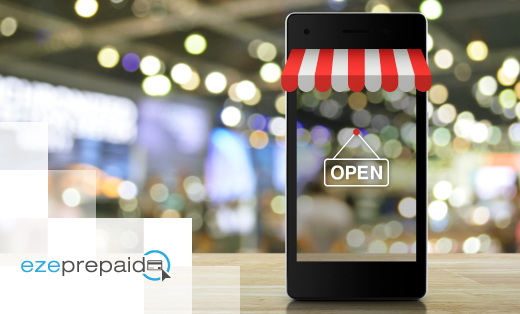5 Innovative Ways to Enhance Customer Loyalty with Digital Reward Cards
Introduction to Digital Reward Cards and Customer Loyalty
Welcome to the digital age where punch cards are gone, while the digital reward cards are in trend. These cool virtual alternatives are a whole new way to grab people’s attention and keep them coming back for more. So, what are such digital reward cards, you ask? They are like the good old stamp cards, but on fire. People receive this card after creating an account with the respective aegis and start earning points, discounts, or even free goods with every purchase. In other words, they save money, and you build a long-term relationship. Digital cards are stored in the client’s phone, meaning they are impossible to lose and simple to redeem—client loyalty on a silver platter. Therefore, you won’t go anywhere; later, you’ll see how these cards turn your one-timers into true aficionados.
The Rise of Digital Reward Programs in Customer Retention Strategies
Digital reward programs are taking the retail world by storm, and for good reason. By offering digital reward cards, businesses can keep customers returning for more. These nifty little tools of the trade work like a charm in securing loyalty. No more cluttered wallets—customers love the convenience of having rewards right on their phones. Every time they purchase, they’re a step closer to a free coffee or a hefty discount on their next pair of sneakers. This simple idea turns a one-time buyer into a repeat customer.
But it’s not all about the freebies. Digital rewards also mean personalized promotions. Companies can now gather data on shopping habits, allowing them to tailor offers that hit the mark. This way, customers feel understood and valued. Smart, right?
And the best part? Digital reward programs are cost-effective. They slash printing expenses, and the hassle of dealing with lost or damaged cards is history. Plus, they’re eco-friendly, and being kind to the planet is always in style.
So, businesses are fast jumping on this digital bandwagon, integrating reward programs into their customer retention strategies. They’re mixing it up with points, levels, and exclusives that charm the socks off customers and keep them loyal. Competition is fierce, and these digital rewards are proving to be an ace up the sleeve for savvy business owners.
First Way: Personalizing Rewards for Enhanced Customer Experience
Let’s dive into the world of personalized rewards to kick things off. Like tailoring a suit to fit perfectly, personalizing your digital reward cards ensures every customer feels special. It’s not rocket science — use data. Here’s the play: track your customers’ purchase history and preferences. Then, leverage this intel to offer rewards they’ll care about. For instance, a coffee shop fanatic? Hit them with a complimentary espresso after their tenth coffee. This method isn’t just nice — it’s smart. Personalized rewards bond customers to your business, encouraging them to keep coming back. It’s a win-win, simple as that.
Second Way: Utilizing Data Analytics for Targeted Rewards
Gone are the days of punch cards; now, data is king. The second way to boost customer loyalty is by wielding the power of data analytics. By tracking customer purchases, you can spot patterns and preferences. And what do you do with that info? Simple. You tailor rewards to match what your customers want. If someone’s always buying eco-friendly products, send them a discount for their next green purchase. Or, say a customer can’t resist your fresh pastries – hit them with a ‘buy 1, get one free’ offer on their favorite treat. It’s like you’re reading their mind. By personalizing rewards, you’re not just pushing a card but building a relationship. Customers feel understood and appreciate the personal touch, and I’ll keep returning for more. It’s innovative and strategic, and it’s how you make those digital reward cards work overtime for loyalty.
Third Way: Mobile Integration for Easy Access and Use
Customers love simplicity and convenience. Integrating digital reward cards with smartphones lets them have their rewards at their fingertips. The majority live on their mobiles, and that’s where you should be too. They can easily check their points, see new deals, and redeem rewards with a tap. It’s a win-win. They don’t have to fuss with physical cards. You get more engagement, and they stick around longer. Remember, customer comfort is king in loyalty programs. Keep it easy, and they’ll keep coming back.
Fourth Way: Gamification of Rewards to Boost Engagement
Adding a game-like twist can take your digital reward cards from just another loyalty program to an adventure customers crave. Think of it as turning points into power-ups. When customers feel like they’re in a game, chasing the next reward or level up, they’re more likely to come back. Try implementing fun challenges or milestones. For example, after five purchases, they could unlock a surprise discount or an exclusive item. This isn’t just about giving out rewards; it’s about creating a journey that makes every interaction with your brand exciting. Remember, the thrill of the game keeps them coming back for more.
Fifth Way: Partnering with Other Brands for Added Value
Teaming up with other businesses can pack a punch for customer loyalty. When you partner with a brand that complements your own, you’re offering more bang for your customer’s buck without them needing to spend extra. It’s a win-win-move. Say you’re a coffee shop, snagging a deal with a local bookstore could mean every fifth coffee unlocks a discount on books. This not only keeps your clients coming back, it exposes them to your partner’s business too. Think of it like a tag team where both brands bring their A-game to the table, offering customers a combo that’s too good to pass up. And let’s face it, who doesn’t love scoring some extra perks for sticking around?
The Importance of Seamless Redemption Processes
To keep customers coming back, redemption should be as easy as snapping your fingers. When you offer digital reward cards, make sure that the process to use them is straightforward. The simpler it is, the happier your customers will be, and the more likely they’ll stick around. If they have to jump through hoops, they might toss your card aside like yesterday’s news. Ensure your digital interface is user-friendly, your instructions crystal clear, and always keep the redemption steps minimal. Here’s the kicker: the redemption process could also include instant perks or surprise bonuses. This strategy not only makes customers feel valued but can turn them into loyal advocates for your brand. Bottom line, smooth redemption is key for customer loyalty, so make it effortless.
Keeping the Momentum: Updating and Evolving Reward Strategies
Your digital reward cards can’t just sit idle. Like your phone needs updates, so does your reward strategy. This means always looking for fresh ways to keep your customers coming back for more. In the digital age, people crave novelty and engagement. You can upgrade your reward system with time-sensitive offers or limited-edition rewards that create a buzz. Or why not gamify the experience? Adding levels and challenges can turn everyday transactions into a bit of fun. Remember to tell your customers about these cool updates through emails or app notifications. Keep it moving, keep it exciting, and your customers will have a reason to stay loyal.
Conclusion: The Future of Customer Loyalty with Digital Reward Cards
Digital reward cards are not just a fleeting trend; they’re becoming a mainstay in the quest to build solid customer loyalty. They offer convenience, personalization, and a modern approach that resonates with the tech-savvy shopper. As we look ahead, the future of customer loyalty is undeniably entwined with technology. Businesses that adapt to this digital shift can expect to forge stronger relationships with their customers, turning one-time buyers into lifelong patrons. So embrace the change, invest in digital rewards, and watch your business thrive in the ever-evolving marketplace. The bottom line? Stay ahead of the curve and your customers will stick with you.
Contact Sales
Want more information about Ezeprepaid? We're happy to help! We provide quick-to-market prepaid and gift card solutions customized to meet your company’s needs.
"*" indicates required fields



